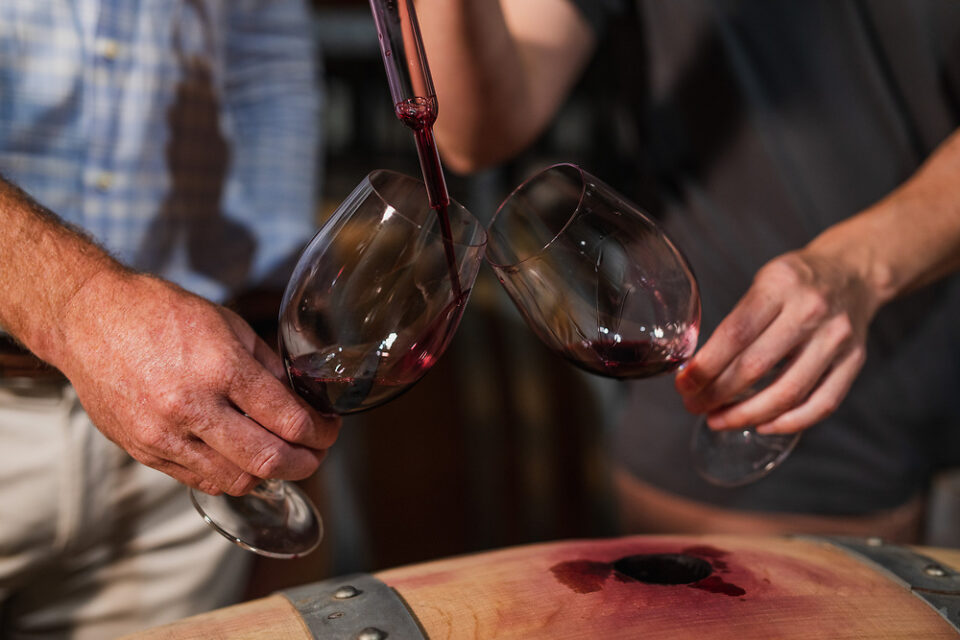Wine aging is a complex process shrouded in mystery and steeped in tradition. Beyond the romantic notion of cellaring bottles for decades, the science behind wine aging reveals a fascinating interplay of factors that influence a wine’s evolution over time. Understanding these elements can enhance our appreciation of wine, revealing how each bottle’s journey from vine to cellar shapes its character. This blog post delves into the lesser-known aspects of the science of wine aging, exploring the key factors that determine a wine’s aging potential and how they contribute to its ultimate expression.
Tannins: the backbone of aging
Tannins play a pivotal role in the aging process, particularly in red wines. These polyphenolic compounds, derived from grape skins, seeds, and stems, as well as oak barrels, act as natural antioxidants. Over time, tannins polymerize, forming larger molecules that precipitate out of the wine, leading to a softer, smoother mouthfeel. The structure and concentration of tannins in the wine at the time of bottling can significantly influence its ability to age, with higher tannin levels generally indicating greater aging potential.
Acidity: preserving freshness
Acidity is another crucial factor in wine aging. Wines with higher levels of natural acidity have a greater propensity for aging, as acidity acts as a preservative, maintaining the wine’s freshness and vibrancy over time. The balance between acidity and other components, such as sugar and alcohol, is key to a wine’s longevity, contributing to the complexity and depth that emerge with age.
Oxygen: the double-edged sword
Oxygen exposure during the winemaking and aging process is a double-edged sword. While controlled oxidation can develop a wine’s complexity and soften tannins, too much oxygen can lead to spoilage and deterioration. The rate of oxygen exposure is influenced by factors such as the type of closure (cork, screwcap, etc.) and the wine’s storage conditions. Micro-oxygenation, a technique used in winemaking, carefully manages oxygen exposure to enhance the wine’s structure and stability without accelerating aging unduly.
Sugar and alcohol: contributors to complexity
The levels of residual sugar and alcohol in wine also affect its aging trajectory. Wines with higher sugar content, such as dessert wines, can age for decades, as sugar acts as a preservative. Similarly, higher alcohol wines, such as fortified wines, have an extended aging capacity due to alcohol’s preservative effect. These components contribute to the wine’s evolving flavor profile, with aged wines often displaying more nuanced, integrated flavors.
Storage conditions: the external influence
External factors, particularly storage conditions, are critical to the wine aging process. Ideal conditions include a consistent temperature (around 55°f or 13°c), appropriate humidity levels (to prevent cork drying), limited light exposure, and minimal vibration. These conditions ensure that the wine evolves in a controlled manner, allowing the intrinsic qualities of the wine to develop complexity and depth over time.
The unpredictability of wine aging
Despite our understanding of these factors, wine aging remains inherently unpredictable. Variations in grape harvests, winemaking techniques, and even bottle variations can influence a wine’s aging potential. This unpredictability is part of what makes wine aging so intriguing, with each bottle offering a unique journey through time.
Conclusion
The science of wine aging is a testament to the intricate balance of chemistry, art, and nature that defines winemaking. By understanding the factors that influence a wine’s evolution, enthusiasts can make informed decisions about cellaring wines and appreciate the remarkable transformations that occur over time. Whether a wine is enjoyed in its youthful vibrancy or savored after years of careful aging, the journey from vineyard to glass is a fascinating voyage through the world of wine.

